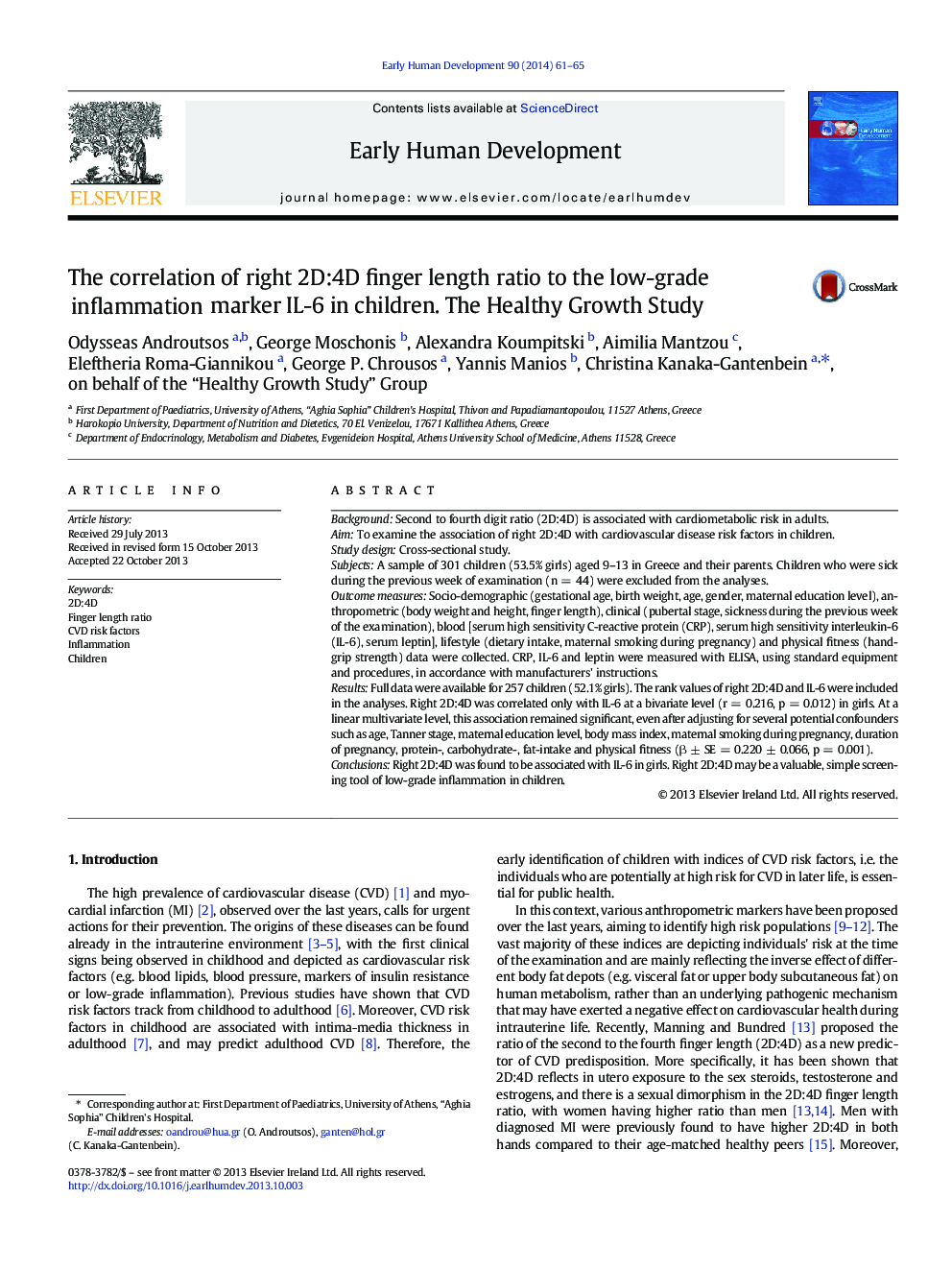| Article ID | Journal | Published Year | Pages | File Type |
|---|---|---|---|---|
| 3918082 | Early Human Development | 2014 | 5 Pages |
BackgroundSecond to fourth digit ratio (2D:4D) is associated with cardiometabolic risk in adults.AimTo examine the association of right 2D:4D with cardiovascular disease risk factors in children.Study designCross-sectional study.SubjectsA sample of 301 children (53.5% girls) aged 9–13 in Greece and their parents. Children who were sick during the previous week of examination (n = 44) were excluded from the analyses.Outcome measuresSocio-demographic (gestational age, birth weight, age, gender, maternal education level), anthropometric (body weight and height, finger length), clinical (pubertal stage, sickness during the previous week of the examination), blood [serum high sensitivity C-reactive protein (CRP), serum high sensitivity interleukin-6 (IL-6), serum leptin], lifestyle (dietary intake, maternal smoking during pregnancy) and physical fitness (handgrip strength) data were collected. CRP, IL-6 and leptin were measured with ELISA, using standard equipment and procedures, in accordance with manufacturers' instructions.ResultsFull data were available for 257 children (52.1% girls). The rank values of right 2D:4D and IL-6 were included in the analyses. Right 2D:4D was correlated only with IL-6 at a bivariate level (r = 0.216, p = 0.012) in girls. At a linear multivariate level, this association remained significant, even after adjusting for several potential confounders such as age, Tanner stage, maternal education level, body mass index, maternal smoking during pregnancy, duration of pregnancy, protein-, carbohydrate-, fat-intake and physical fitness (β ± SE = 0.220 ± 0.066, p = 0.001).ConclusionsRight 2D:4D was found to be associated with IL-6 in girls. Right 2D:4D may be a valuable, simple screening tool of low-grade inflammation in children.
